Authenticating
Wedgwood's Ceramics
| Is it REAL Wedgwood? |
| The Wedgwood Collector is faced with many imitators and unscrupulous rival manufacturers who either traded on a relationship to the Wedgwood family by marking their wares so that the uninformed might buy them thinking that they were getting Wedgwood quality or left their products unmarked so that the buyer might attribute their work to the Wedgwood potteries.
Some of the imitators' work is quite good and would grace a collection of 18th and 19th century English potters work. Fortunately Josiah was the first potter of note to mark his production with his own name, rather than easily copied potters marks like the crossed sword mark used at Sevres or the Chelsea potteries' anchor mark. Josiah was not reticent to defend his marks and reputation in court during his lifetime and his successors have followed that pattern to the present day. While early Wedgwood works may be unmarked, the presence of the correct mark is both an indication that the piece is genuine and an index of its age. After 1781 few unmarked pieces can be correctly attributed to Wedgwood |
| 1 |  | |
| 2 |  | Josiah started marking his wares about 1759 with impressions made with printers movable type. Each letter was impressed separately and and the mark is uneven and often in curved shape. Much of the production remained unmarked. These marks were used through 1769. |
| 3 | In 1769 the work of Josiah's partnership with his cousin, Thomas Wedgwood for the manufacture of useful wares is impressed with this mark made with a slug. After 1781 the mark was used on both useful and decorative pieces. This impressed mark remains the usual mark until the adoption of the sans serif version in 1929. |
| 4 | 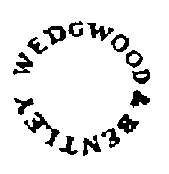 | 5 | 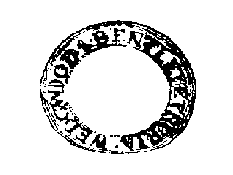 | 6 | 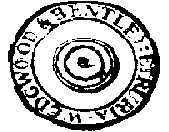 |
| Commencing in about 1769 the decorative works produced by Josiah's partnership with Bentley were marked with one of the three of these marks either impressed or raised from the body. With the death of Bentley in 1781 Mark 3 was used on all wares. |
| 7 | 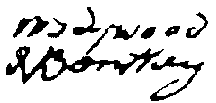 | This extremely rare script mark is used on ornamental wares between 1769 and 1780. |
| 8 | 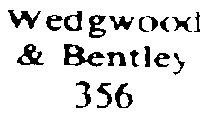 | 9 |  | 10 | 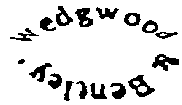 |
| These marks were used on smaller seals, cameos and intaglios. The number in mark 8 is the Wedgwood and Bentley catalog number of the piece. |
| 11 |  | This impressed mark is used on larger pieces, sometimes with the word ETRURIA added. |
| 12 |  | |
| 13 | These were used on all types of ware from 1780 until about the time of Josiah's death in 1795. Mark 12 is the upper and lower case mark and mark 13 is called the lower case mark. |
| 14 |  | This very rare impressed mark dates the piece at about 1790. |
| 15 |  | This rare mark used by Josiah Wedgwood II is found on lustre ware, basalts, rosso antico and Jasper Ware pieces. |
| 16 | Printed in red, blue or gold on Wedgwoods 1812-22 production of bone china. |
| 17 |  | This printed mark appears on the stone china range manufactured between 1820-61. |
| 18 |  | Impressed mark used about 1840-45. |
| 19 | Sans Serif mark introduced in 1929. |
| Marks on Bone China and Queen's ware production: |
| 20 | 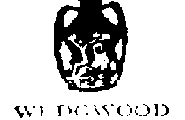 | Printed mark found on bone china and some Queen's ware from 1878. |
| 21 | 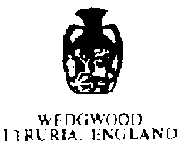 | Rare impressed mark on Queen's ware 1891-1900. |
| 22 | 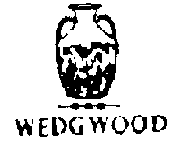 | Printed mark on bone china from 1900 onwards ENGLAND OR MADE IN ENGLAND added below. |
| 23 | 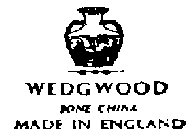 | Printed mark on bone china from about 1902. |
| 24 | 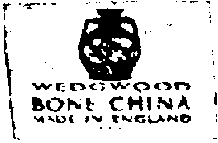 | Machine printed mark on bone china 1950-62. |
| 25 | 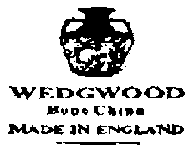 | Bone china mark introduced in 1962. |
| 26 | 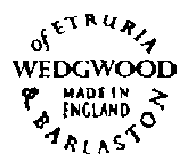 | Queen's ware printed or impressed from about 1940
|
Collecting Wedgwood
Dating Wedgwood
Authenticating Wedgwood
Jasper Ware
Queens ware
Back to Wedgwood home page